|
-

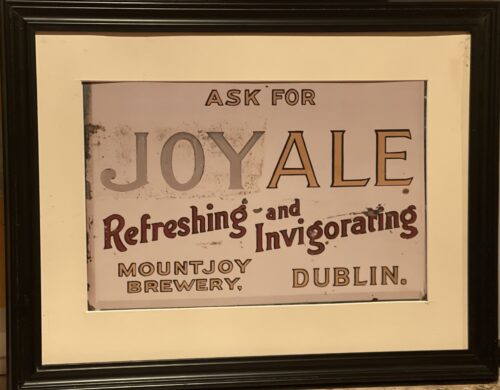 44cm x 52cmMountjoy Brewery Ltd, Russell Street, Dublin, Ireland. Founded 1852. Known as Findlater & Co. until June 1891. Closed 1957. From the Brewery History society Journal Number 91 Founded by Alexander Findlater, a Scottish businessman, in 1852. Primarily a porter brewer but later ale brewers. They enjoyed local, military and export trade with markets in the UK and the colonies. The brewery passed into the hands of Messrs Malone & Blood in 1900 and had by this time become the largest exporter of porter next to Guinness through the port of Dublin. It outlived all its rivals in Dublin apart from Guinness and closed in 1957.
44cm x 52cmMountjoy Brewery Ltd, Russell Street, Dublin, Ireland. Founded 1852. Known as Findlater & Co. until June 1891. Closed 1957. From the Brewery History society Journal Number 91 Founded by Alexander Findlater, a Scottish businessman, in 1852. Primarily a porter brewer but later ale brewers. They enjoyed local, military and export trade with markets in the UK and the colonies. The brewery passed into the hands of Messrs Malone & Blood in 1900 and had by this time become the largest exporter of porter next to Guinness through the port of Dublin. It outlived all its rivals in Dublin apart from Guinness and closed in 1957. -
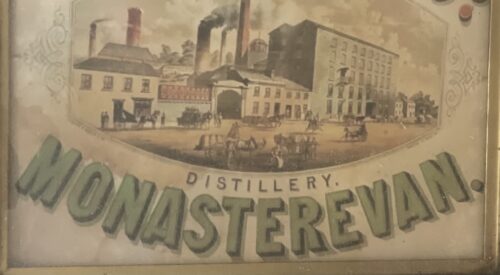
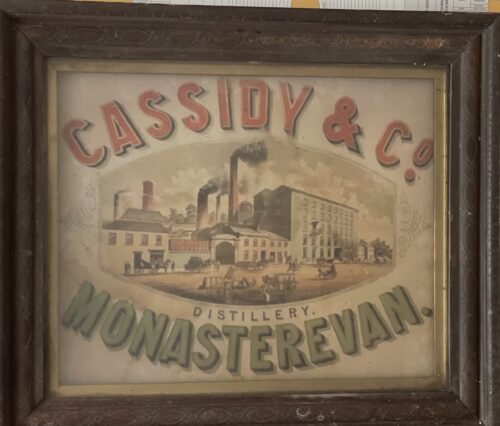 67cm x 56cm
67cm x 56cmIn 1784 Monasterevin Distillery was opened by Mr. John Cassidy. A hundred years later, in 1884 the distillery was making 250,000 gallons of whiskey a year. It was said that the "Cassidy whiskey was the best whiskey in the country".
Some of the whiskey was exported to London. It was transported to Dublin on canal boats and then shipped to England from Dublin Port. A brewery for making beer was later opened in 1860. Cassidy's Distillery and Brewery closed in 1934.
The Cassidy Family lived in Monasterevin House. They were friendly with Gerard Manley Hopkins, the famous poet. He stayed with them when he visited Monasterevin.
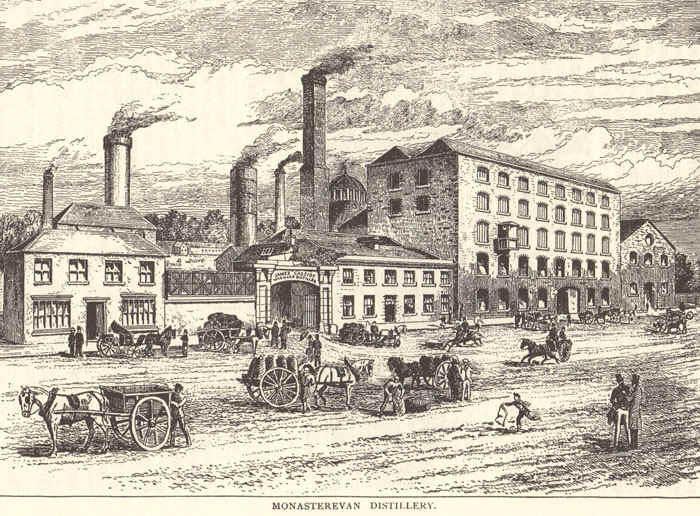
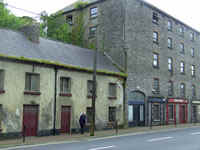
-
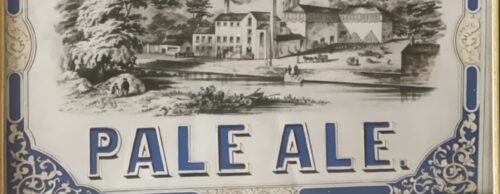
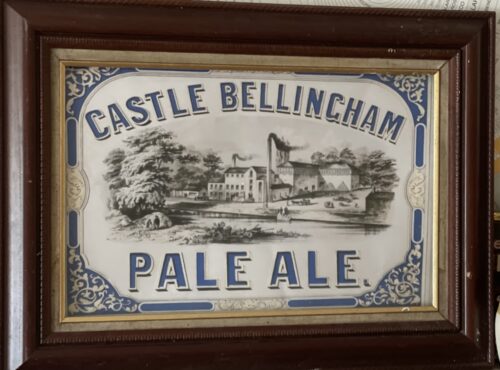 74cm x 52cm ANOTHER great industry on the Scotch Hall site was the brewing firm of Cairnes Ltd, one of the original firms of Irish brewers dating back to 1772 with the foundation of the Castlebellingham Brewery at the picturesque Co Louth village of that name.In 1825, William Cairnes, who was related by marriage to the owners of the ’Bellingham brewery, founded the brewery at Marsh Road, Drogheda, which, for over 150 years, gave employment to almost 200 workers and the firm was famous for its ales and stout. In 1889 the interests of the two breweries were pooled, a public company being formed under the title of the Castlebellingham and Drogheda Breweries Ltd. This title was changed for brevity in 1933 to Cairnes Ltd. For a good many years subsequent to the merger, the breweries were worked independently, each supplying its own customers throughout Ireland and abroad. However, in 1923, it was considered advisable to concentrate brewing in Drogheda, owing to the more advantageous position of the town, and the brewing plant and premises there, were more extensive. Actually the plant at Drogheda was one of the most up-to-date in Ireland and compared very favourably with that of breweries in England and Wales. The supply of brewing water was obtained from a 400ft deep artesian well on the company’s premises. (I wonder if it is still there) and this water was used with the choicest hops and malt made from the best Irish barley obtainable. The hops used came chiefly from Kent and when obtainable, a percentage came from the USA. The process through which the barley went from its arrival in the brewery until it emerged as ale or stout, was extremely interesting and quaint. The barley was first dried to a consistent level of moisture content and then stored for a few weeks before being steeped. It was then ‘floored’ on lots which the brewery had, as well as lofts in Dominic Street and Wellington Quay. These have, in recent years, been converted into shops and a high rise apartment block. Here on these lofts the growing process of the barley in the ground was artificially repeated, the growth however being terminated at the desired stage. The barley was then kilned and cured before being ground and mashed with hot water and the liquid was drawn off. It was then run to built-in coppers, where hops was added, then boiled, the wort, as it was called, being subsequently strained from the hops, cooled and fermented. The final stage was when the beer was casked (in wooden barrels) and matured. Altogether there were approximately 200 people employed in the industry, for apart from the actual brewing of the beer there was a tremendous amount of activity, and the transport department built up a fine fleet of steam lorries, (I remember seeing Gerry McConville driving one of these down the Marsh Road), motor lorries and carts and Jemmy Early was in charge of town deliveries in a horse drawn wagon, from which he rolled the barrells into the pub. While catering for an extensive home market, Cairnes Ltd had, since May 1951, been engaged in the export of bottled stout to America. This stout was much stronger than anything of its kind on sale in Ireland and the venture steadily expanded in the new market. The metal caps of the export bottles had the imprint of the Star and Crescent, which is part of the Drogheda Coat of Arms, while the label carried three reproductions of miniature photographs of St Laurence Gate. And so one of Drogheda’s oldest industries was carrying the name of the town across the world. In Millmount museum there is a permanent exhibition of artifacts from Cairnes Brewery which were literally ‘rescued’ before and during the closing down of the brewery in 1965 when Guinness started buying out their competitors.Showcased are the various bottles with their beer labels – the famous ‘Stingo’, a most favoured ale at the time. There are also the large enamel advertising signs with ‘W Cairnes and Son. X Porter’ showing the brewery in its heyday, and a complete set of tools which were used by the cooper (wooden barrel maker), with a mythology of names like, the adze, draw knife, the buzz, the auger and chisel, the spokeshave and the coopers anvil. Note: A recent informant who wishes to remain anonymous, wrote the following about Cairnes Brewery: ‘The last brew was carried out in October 1960. The brew was mashed by Joseph Oliver Roche, head brewer and declared by Patrick (Paddy) Weldon. ‘In the break-up of the Brewery by Guinness, Roche was sent to Waterford, while Weldon was sent to Dundalk. Kevin Beatty was also sent to New Ross or was it Enniscorthy?’
74cm x 52cm ANOTHER great industry on the Scotch Hall site was the brewing firm of Cairnes Ltd, one of the original firms of Irish brewers dating back to 1772 with the foundation of the Castlebellingham Brewery at the picturesque Co Louth village of that name.In 1825, William Cairnes, who was related by marriage to the owners of the ’Bellingham brewery, founded the brewery at Marsh Road, Drogheda, which, for over 150 years, gave employment to almost 200 workers and the firm was famous for its ales and stout. In 1889 the interests of the two breweries were pooled, a public company being formed under the title of the Castlebellingham and Drogheda Breweries Ltd. This title was changed for brevity in 1933 to Cairnes Ltd. For a good many years subsequent to the merger, the breweries were worked independently, each supplying its own customers throughout Ireland and abroad. However, in 1923, it was considered advisable to concentrate brewing in Drogheda, owing to the more advantageous position of the town, and the brewing plant and premises there, were more extensive. Actually the plant at Drogheda was one of the most up-to-date in Ireland and compared very favourably with that of breweries in England and Wales. The supply of brewing water was obtained from a 400ft deep artesian well on the company’s premises. (I wonder if it is still there) and this water was used with the choicest hops and malt made from the best Irish barley obtainable. The hops used came chiefly from Kent and when obtainable, a percentage came from the USA. The process through which the barley went from its arrival in the brewery until it emerged as ale or stout, was extremely interesting and quaint. The barley was first dried to a consistent level of moisture content and then stored for a few weeks before being steeped. It was then ‘floored’ on lots which the brewery had, as well as lofts in Dominic Street and Wellington Quay. These have, in recent years, been converted into shops and a high rise apartment block. Here on these lofts the growing process of the barley in the ground was artificially repeated, the growth however being terminated at the desired stage. The barley was then kilned and cured before being ground and mashed with hot water and the liquid was drawn off. It was then run to built-in coppers, where hops was added, then boiled, the wort, as it was called, being subsequently strained from the hops, cooled and fermented. The final stage was when the beer was casked (in wooden barrels) and matured. Altogether there were approximately 200 people employed in the industry, for apart from the actual brewing of the beer there was a tremendous amount of activity, and the transport department built up a fine fleet of steam lorries, (I remember seeing Gerry McConville driving one of these down the Marsh Road), motor lorries and carts and Jemmy Early was in charge of town deliveries in a horse drawn wagon, from which he rolled the barrells into the pub. While catering for an extensive home market, Cairnes Ltd had, since May 1951, been engaged in the export of bottled stout to America. This stout was much stronger than anything of its kind on sale in Ireland and the venture steadily expanded in the new market. The metal caps of the export bottles had the imprint of the Star and Crescent, which is part of the Drogheda Coat of Arms, while the label carried three reproductions of miniature photographs of St Laurence Gate. And so one of Drogheda’s oldest industries was carrying the name of the town across the world. In Millmount museum there is a permanent exhibition of artifacts from Cairnes Brewery which were literally ‘rescued’ before and during the closing down of the brewery in 1965 when Guinness started buying out their competitors.Showcased are the various bottles with their beer labels – the famous ‘Stingo’, a most favoured ale at the time. There are also the large enamel advertising signs with ‘W Cairnes and Son. X Porter’ showing the brewery in its heyday, and a complete set of tools which were used by the cooper (wooden barrel maker), with a mythology of names like, the adze, draw knife, the buzz, the auger and chisel, the spokeshave and the coopers anvil. Note: A recent informant who wishes to remain anonymous, wrote the following about Cairnes Brewery: ‘The last brew was carried out in October 1960. The brew was mashed by Joseph Oliver Roche, head brewer and declared by Patrick (Paddy) Weldon. ‘In the break-up of the Brewery by Guinness, Roche was sent to Waterford, while Weldon was sent to Dundalk. Kevin Beatty was also sent to New Ross or was it Enniscorthy?’ -
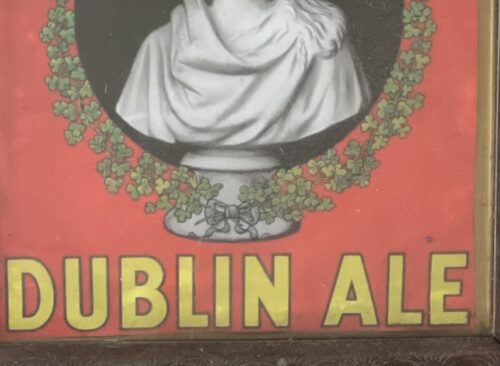
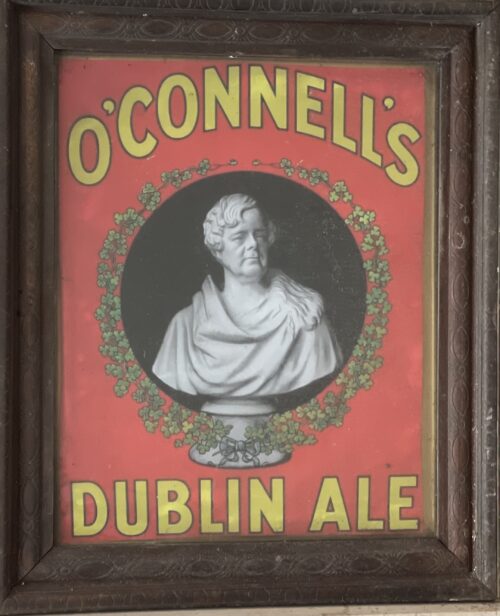 67cm x 56cm
67cm x 56cmDaniel O’Connnell Jr. had famously acquired the Phoenix Brewery in James’s street in 1831, which produced O’Connell’s Ale. It should be noted that O’Connell and the Guinness family were at times political rivals, something best captured by the 1841 ‘Repeal Election’, where O’Connell had stood against and defeated Arthur Guinness Jr. This period would see a sizeable boycott of Guinness, dubbed “Protestant Porter” by sections of the populace, though this was against the wishes of O’Connell himself.
John D’Arcy continued to brew O’Connell Ale after the family had ceased their role in brewing, and in time production moved to the Anchor Brewery in Usher Street. Watkins eventually took up the brewing of O’Connell Ale, and this advertisement was placed by them in the pages of leading newspapers in the 1930s.
While Arthur had failed to defeat O’Connell at the Ballot Box, I always wonder what O’Connell would think of the Guinness Empire today every time I see a Diaego truck pass his statue.
